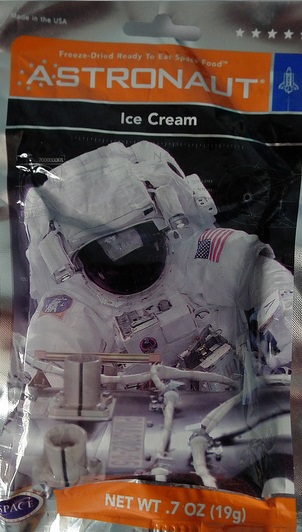
(Caution: do not read just before lunch!) We all know the feeling… queasiness, belly in knots, guts on fire and no end in sight. Now I want you to imagine the worst possible place to get the runs or yak up your breakfast. Maybe you’re thinking about your car’s leather seats, a sporting competition you’d rather forget, or that time you were supposed to meet a hot date. How about on a shuttle in outer space? Worse yet, what if your illness far from home was accompanied by a realization that your (rather limited) food supply was to blame?
 In the late 1950s and 1960s, the Pillsbury company teamed up with NASA and the US Army Laboratories to develop a method for ensuring astronauts could avoid such a predicament. The Hazard Analysis and Critical Control Points (HACCP) approach revolves around preventing hazards at critical steps during food production, rather than simply testing the finished product. Since then, the US Food and Drug Administration has adopted the same concept for keeping our meat, fish, poultry, milk, juice, and food-service establishments shipshape. Thank you, Mr. Doughboy!
In the late 1950s and 1960s, the Pillsbury company teamed up with NASA and the US Army Laboratories to develop a method for ensuring astronauts could avoid such a predicament. The Hazard Analysis and Critical Control Points (HACCP) approach revolves around preventing hazards at critical steps during food production, rather than simply testing the finished product. Since then, the US Food and Drug Administration has adopted the same concept for keeping our meat, fish, poultry, milk, juice, and food-service establishments shipshape. Thank you, Mr. Doughboy!
Unfortunately, if you’ve had a glass of tap water today, it likely did not have the same preventive checks in place. To keep disease at bay, drinking water typically receives some type of filtration and disinfection. Required compliance monitoring tells us retroactively whether finished water was safe according to measurable indicators (e.g., common fecal bacteria); however, frequency of monitoring varies widely, and people might have already been exposed by the time results become available. Further, while disinfectant usually does a great job of killing bacteria, most stomach flu cases are caused by viruses that resist disinfection and are harder to measure. Chemical testing similarly looks at historically relevant indicators, but may miss hundreds of newly created chemicals, such as pharmaceuticals, personal care products, or pesticides. Thus, backward-looking monitoring can both overestimate safety and come too late to prevent illness, much of which goes unreported.
High-profile events in Flint, Michigan, Charleston, West Virginia, and Wilmington, North Carolina have raised awareness that water suppliers are facing increasing vulnerability due to land development around water sources, aging water treatment and distribution infrastructure, and the plethora of new chemicals entering water bodies. Globally, the World Health Organization has recommended a holistic risk management program called Water Safety Planning for all drinking water suppliers since 2004, with examples in more than 90 countries as of 2017. Like HACCP for food systems, they work by instituting proactive checks on the most critical risks between the water source and your tap.
Recent research investigating best-case scenarios (urban utilities in high-income countries) demonstrates the potential for this approach to benefit public health, water quality, regulatory compliance, and operational performance. Cost-benefit ratios remain under investigation. Importantly, reductions in the incidence of stomach flu can lead to reduced healthcare costs and increased worker productivity, with the long-term expectation of healthier, thriving, and more equitable communities. According to a 2010 United Nations resolution and the 2016-2030 Sustainable Development Goals, all of us deserve safe drinking water. Perhaps it’s time we follow in the footsteps of those who first walked on the moon?
Peer edited by: Daniel Conroy
Follow us on social media and never miss an article: